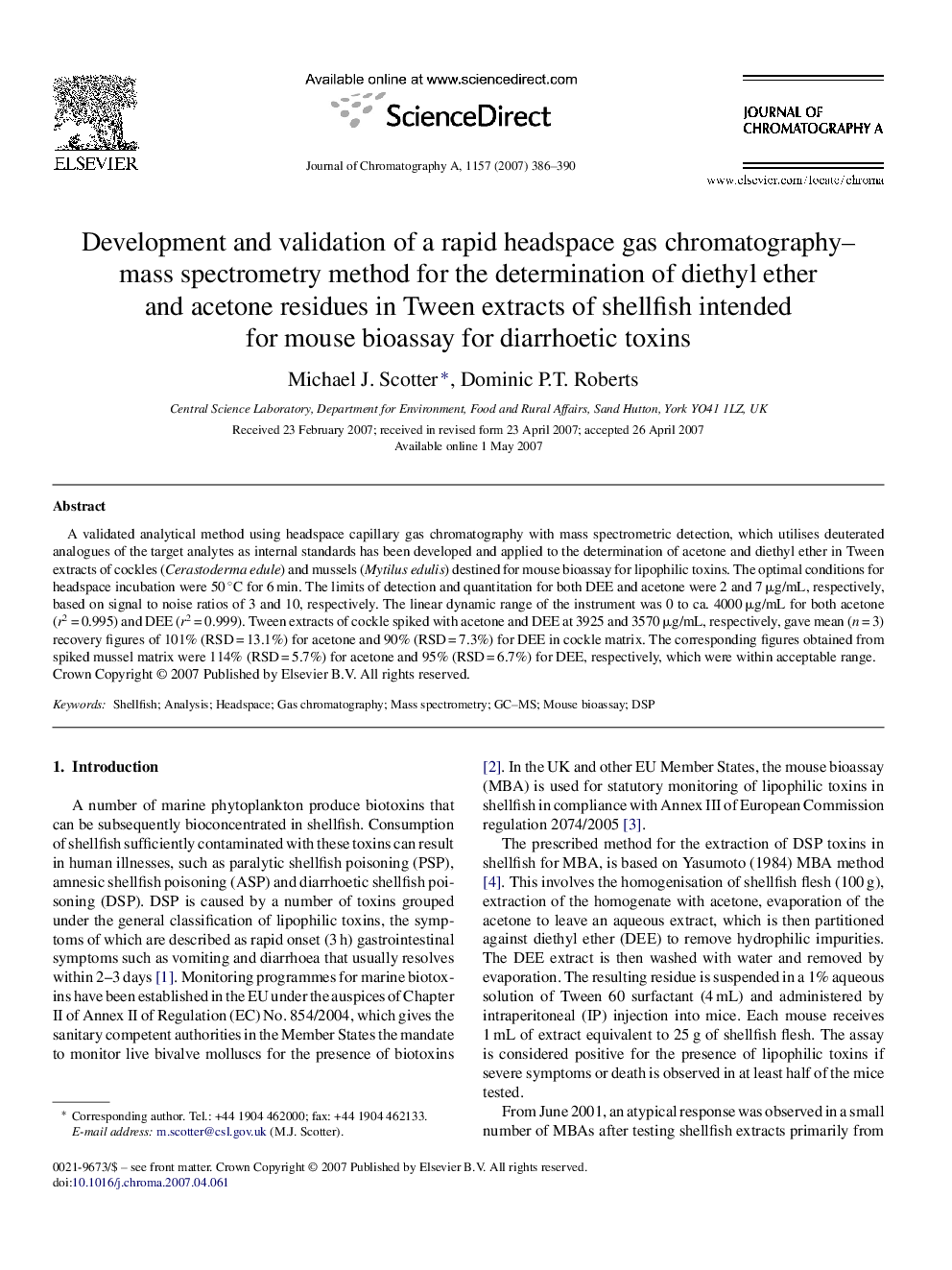| Article ID | Journal | Published Year | Pages | File Type |
|---|---|---|---|---|
| 1207047 | Journal of Chromatography A | 2007 | 5 Pages |
A validated analytical method using headspace capillary gas chromatography with mass spectrometric detection, which utilises deuterated analogues of the target analytes as internal standards has been developed and applied to the determination of acetone and diethyl ether in Tween extracts of cockles (Cerastoderma edule) and mussels (Mytilus edulis) destined for mouse bioassay for lipophilic toxins. The optimal conditions for headspace incubation were 50 °C for 6 min. The limits of detection and quantitation for both DEE and acetone were 2 and 7 μg/mL, respectively, based on signal to noise ratios of 3 and 10, respectively. The linear dynamic range of the instrument was 0 to ca. 4000 μg/mL for both acetone (r2 = 0.995) and DEE (r2 = 0.999). Tween extracts of cockle spiked with acetone and DEE at 3925 and 3570 μg/mL, respectively, gave mean (n = 3) recovery figures of 101% (RSD = 13.1%) for acetone and 90% (RSD = 7.3%) for DEE in cockle matrix. The corresponding figures obtained from spiked mussel matrix were 114% (RSD = 5.7%) for acetone and 95% (RSD = 6.7%) for DEE, respectively, which were within acceptable range.
